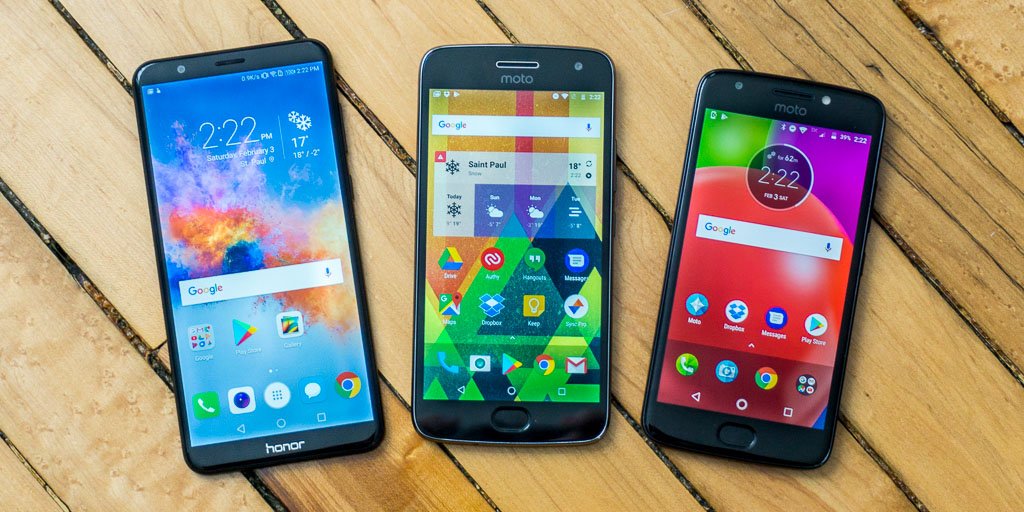In 2001, mobile phones were introduced to Nigeria and brought with it a lot of ‘GSM madness”. Lagos, as usual, had the first slice of the ‘cake’ followed by Abuja and then Port Harcourt. In 2017, the Nigerian Communications Commission (NCC) reported over 90 million internet subscribers on mobile phones in Nigeria. More than just the network, it is important also to understand certain things when selecting the best mobile phones for Nigerians.
The smartphone market, in particular, has become very competitive as it seems to be the widely accepted and used form of mobile phone by Nigerians. With the assorted brands of phones available, it is only wise to narrow your search considerably in order to get the best that suits your needs and money’s worth.
Tips For Selecting The Best Mobile Phones For Nigerians

1. WHAT DO YOU NEED A MOBILE PHONE FOR?
If all you desire is a phone with which to make calls and send text messages, then you need a basic mobile phone. These are mostly cheap and very easy to operate.
If your phone needs include the basic phone functions as well as minimal multimedia, WEB and sharing options, then you should consider a feature phone. It functions on a limited proprietary operating system and is cheaper than the average smartphone. An example is Sharp SH-04B.
Smartphones are the rave of the moment as they offer a wide range of options including a full and robust operating system. It is practically a full upgrade of the feature phone and may be accountable for over 50% of mobile phone use in Nigeria.
For widescreen lovers, the Phablet will be just the thing. It is a combination of a tablet and a smartphone with its major difference being the screen size. Most of them come with a stylus for easy use.
2. WHAT BRAND AND OPERATING SYSTEM?
A phone brand signifies the company/ trademark that produces a particular phone while its operating system refers to the low-level software that manages and determines the functions of a phone. The following are operating systems with some corresponding brands (in bracket).
JAVA (Nokia)
Symbian (Nokia)
Asha Touch and Asha Software Platform (Nokia)
Bada (Samsung)
Meedo (Nokia)
Blackberry RIM (Blackberry)
Android (Samsung, ITEL, Infinix, Tecno, LG)
Windows Phone (Microsoft, Alcatel OneTouch, Microsoft)
iOS (Apple iPhone)
3. IS IT UPGRADEABLE?
Additional features get added to the operating system daily. So if you don’t desire to be left behind, this question is very important. Some smartphones offer an opportunity to upgrade your operating systems as they come. These include Blackberry, Samsung, Apple, HTC and most other established phone brands. Endeavor to buy a phone not more than 18 months after its release to get the most out of your phone.
4. BATTERY LIFE
Now, this is one very important detail to check in a country with poor power supply like Nigeria. Batteries are rated using the mAh (milliamp hours) scale. Most basic phones and feature phones have long battery life lasting as much as a day or more after one full charge. Smartphones are different though. An average smartphone should boast of at least 3000mAh. The Lenovo Moto E4 Plus packs a 5,000mAh battery, this is expected as it is designed for long life. The capacity/longevity of a phone is dependent on its mAh so the higher the mAh, the better.
Thankfully, options are available for a weak or not so good battery life. Some phones come with an added advantage of fast charging technologies. One good example is the Qualcomm Quick charge which is said to be able to deliver at least five hours of battery life in only 5 minutes of charging. A lot of smartphone owners also own a power bank. You could check them out too. You could also have your generator set ready to charge every hour or two.
5. MEMORY
There are two memory spaces to consider in a mobile phone: the RAM and the ROM.
The random access memory (RAM) is more like a virtual memory on a phone. It is responsible for leaving your content loaded even when you switch between applications. A good RAM size makes multitasking with your phone a lot better. An average smartphone should be one sporting a 3GB RAM size while high-end phones sport 4GB. A few phones like the OnePlus 3 boast of as much as 6GB RAM. This takes multitasking to a new level but also note that more RAM is not always better performance. There are some technicalities around that.
The read-only memory (ROM) is used to store all the files on a phone. It also varies in phones with 32GB being the average and 16GB the least. Most smartphones support the use of an external SD card which could be as high as 256GB.
6. DISPLAY
The quality of a phone’s screen display is highly dependent on its size, resolution and technology.
Basic phones and feature phones have very small screen size which tends to make activities outside calls and messaging quite boring. Smartphones, however, present a wider screen size. In Nigeria, about 20% of mobile phones sold have a screen size of 5inches or higher. Basically, the larger the screen size, the better for your viewing pleasure but it isn’t as basic as it seems.
A phone’s resolution is important. This is the number of pixels in a display. A pixel is a unit of the screen illuminated to form an image. The more pixels put together in a space, the higher the resolution and the sharper the quality of images formed. Earlier phones came with resolutions of 1,280 * 720 (720p) or 1,920 * 1,080 (1,080p). These paved a way for the quad-core (2,160 * 1,440) and now a few phones boast of the 4K or 3,840 * 2, 160 display.
So, a particular resolution in a smaller screen size gives a better picture quality than in a larger screen size. This is called pixel density referred to in pixels-per-inch (PPI).
Now, another thing to consider is the manufacturer’s display technology. The Organic Light Emitting Diode (OLED) and Liquid Crystal Display (LCD) are the common ones. While LCD uses one backlight for the display, OLED uses one per pixel. Although they are several other cons and pros between these two, manufacturers are increasingly in favor of OLED.
7. TOUCHSCREEN OR NOT?
Smartphones have three keyboard options: a touchscreen, QWERTY keyboard or slide with touchscreen being the most used. Touchscreen phones offer the most display while phones with the QWERTY keyboard offer less but make for easier and faster use. A combo of these two in a slide-in option is even better offering you both wide display and easy use as seen in the Nokia E7.
8. CAMERA
In this era of selfies, dual cameras are the thing but it’s left to you to get a phone with just a rear camera or one with both rear and front camera.
A lot of persons hear things like 13megapixels and 16megapixels and go gaga. Well, first of all introduction! Just as pixels and resolutions work in a display, the same thing applies here. A high megapixel is good but it is almost as good as the aperture of your camera allows it to be. Aperture is the size of the camera’s opening through which light reaches the lens. You will notice it written as f/1.8 or f/2.2 and so on. Note that a larger aperture (and more light coming in) is dependent on a smaller number.
Also pixel size matters as the larger a pixel, the more light (from the aperture) it absorbs. It is measured in µm and comes listed in the information of most phones. Galaxy S8 has 1.4µm pixels and boasts of high-quality pictures.
HDR(High Dynamic Range) might also be a thing for you. When activated, it makes your phone take three shots at once: one overexposed, one underexposed and one mid-range. It then takes desirable parts from each to give a better image. Its con is that it sometimes gives a washed-out or over-saturated final product. Good enough, most phones give you a normal image and an HDR to choose from.
9. AVAILABILITY OF APPLICATIONS
Some phones are literally ‘stingy’ and do not avail you the option of using third-party applications which actually help in spicing up your phone. Phones with operating systems like Blackberry and Android give you this option with their respective App stores. The iOS and Windows platform also offer this option.
10. REPAIR CENTRES AND MANUFACTURER SUPPORT
Phones like all other electronic appliances are wont to require repair from time to time. So it is wise to buy a phone whose company has a physical presence in Nigeria. Also ensure that obtaining services, enhancements, parts, and accessories wouldn’t be an uphill task.
11. BUDGET
As important as it is to weigh in all the options listed above, your budget actually determines the phone you end up with as money is still the buying power. It determines if what you get is a low-end, mid-end or high-end smartphone (mobile phone). Remember to always check for recently released phones for optimum use.
See Also: Infinix Hot 4 Lite Review: Everything to know before buying in Nigeria, Ghana, and Kenya
Of course, you will also want to check out for data sharing options like Bluetooth and USB but applications like Xender and FlashShare make this not so important in a smartphone.
With these points in mind, you are now ready to select a mobile phone. Go on and shop!















